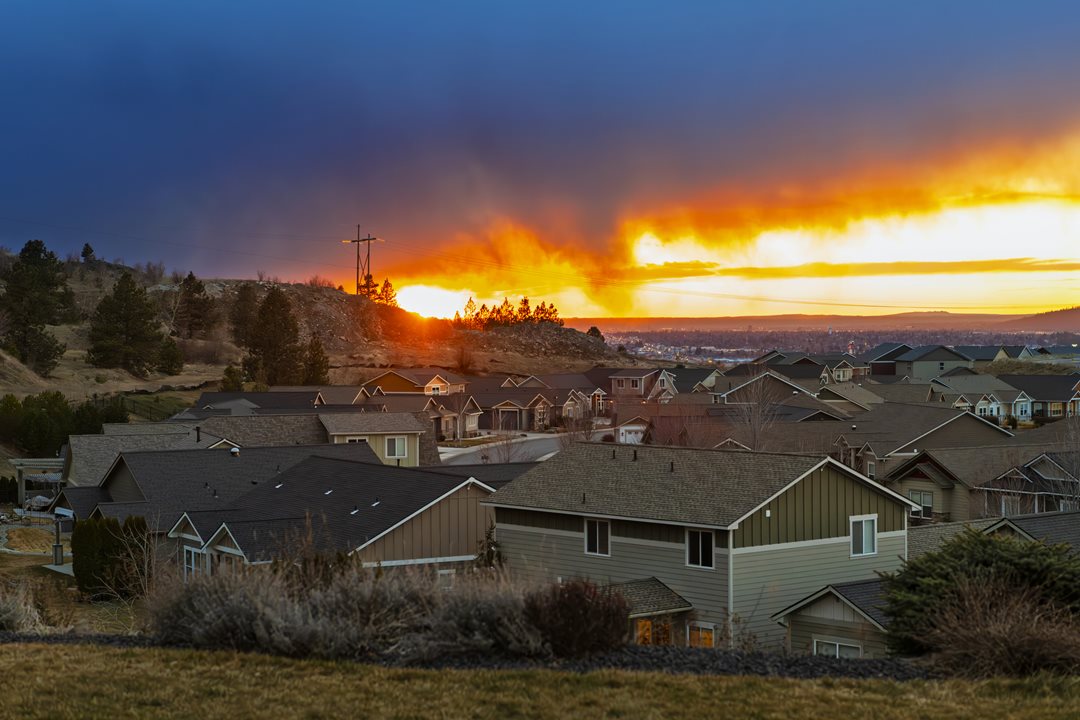12 wildfire mitigation strategies for your home and property I PEMCO
 Summers in the Pacific Northwest are special, with endless outdoor activity options and long, warm sunny days. However, as climate patterns shift and our fire season grows longer and more intense, our attention is spent on managing wildfire risk and mitigating its impact on our homes and lives.
Summers in the Pacific Northwest are special, with endless outdoor activity options and long, warm sunny days. However, as climate patterns shift and our fire season grows longer and more intense, our attention is spent on managing wildfire risk and mitigating its impact on our homes and lives.
At PEMCO, we’re committed to helping you prepare for wildfire season so you can prevent the preventable. While your home insurance policy may help in the aftermath of a wildfire, taking proactive steps now can reduce your overall risk.
Out of our love of prevention, we want to share a list of the top twelve practical strategies to help you defend your home and property against wildfire damage. From creating defensible space around your home to choosing fire-resistant materials that stand up to the unique challenges of the Pacific Northwest.
How can I protect my home against wildfires?
- Clean your gutters. Accumulated leaves and needles provide tinder for floating embers.
- Screen eave and foundation vents with 1/8-inch wire mesh to keep out blowing embers.
- Remove boards, debris, and even wood-handled tools stashed under decks. These materials can provide fuel for a fire that’s spreading along the ground.
- Screen under decks with 1/8-inch mesh. This prevents ignition from floating embers, the same as screening vents.
- Break up wood fences with metal gates. Fire can easily run along a wood fence, meaning your fence can give fire a pathway straight to your house. A metal gate or shield can interrupt the flames.
How can I safeguard my land against wildfire?
- Clear away fallen evergreen needles, woody debris, and dead grass. Keep grass mowed and watered within 30 feet of your home.
- Prune trees so the lowest branches – the foliage, not just where the branches attach to the trunk – are at least 15 feet high, and ensure no limbs come within 15 feet of your home. Eliminate “brush to branch” contact.
- Ensure tree crowns are spaced at least 20 feet apart.
- Mulch with pumice or gravel rather than combustible beauty bark. Consider firebreaks as part of the landscape – ornamental ponds, rocky “dry creek beds,” and graveled paths and driveways.
- Move firewood at least 30 feet away and uphill from any structure (uphill, since that’s the direction fire tends to burn).
- Clear vegetation away from propane tanks. Put down weed barrier and spread crushed gravel around the tank to create a 10-foot buffer against flame traveling along the ground.
- Make your property firefighter-friendly with your address visible from the street both day and night.
Stay Prepared, Stay Protected
Wildfires are an undeniable part of life in the Pacific Northwest, but with the right preparation, their impact can be mitigated. By implementing these twelve prevention strategies, you’re not only protecting your home and personal property—you’re also contributing to the safety and resilience of your community.
At PEMCO, we’re here to support you every step of the way. From offering guidance on risk reduction to providing coverage when you need it most, our goal is to help you worry less and live more—no matter what the season brings.
If you have questions about your current policy or want to learn more about how wildfire preparedness can affect your coverage, don’t hesitate to reach out. You can reach us at 1-800-GO-PEMCO (1-800-467-3626) or speak with your local PEMCO agent.
Note: Following these wildfire mitigation and prevention tips does not guarantee insurance coverage from PEMCO.
Looking for more wildfire tips? Find them all in one place: Wildfire Blog.
Share on social media